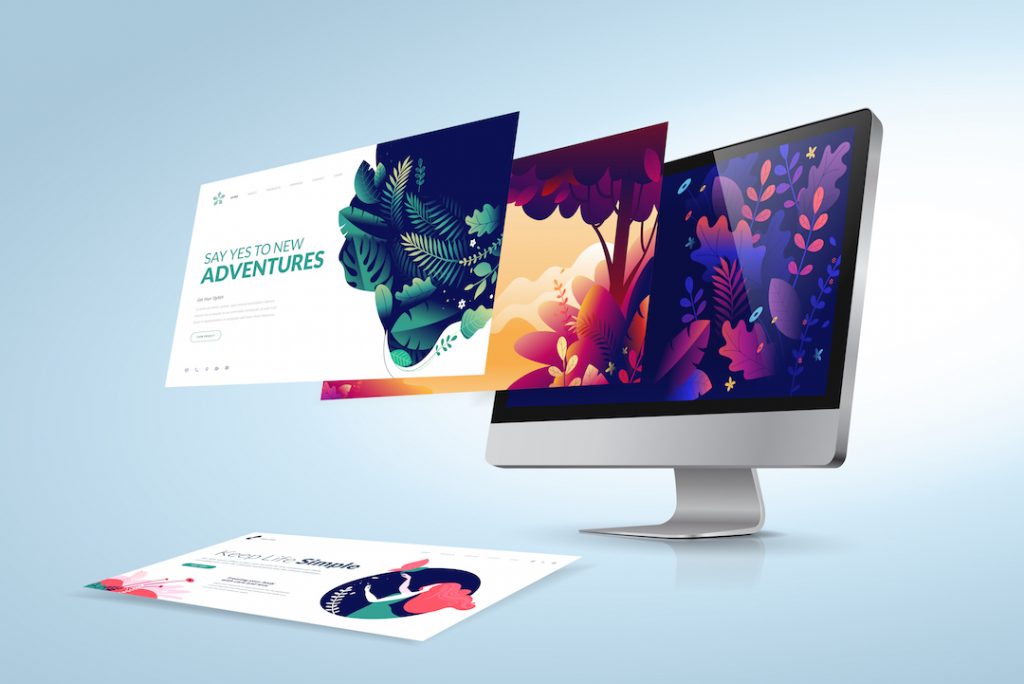A webpage is often the first impression a potential client or customer has of your business, so it’s important to get it right. And though it’s certainly not rocket science, there’s a certain art to creating a website that attracts, engages and converts potential customers – and it has nothing to do with eye catching visuals or providing the audience with as much information as possible. In fact, the key elements of website design are relatively simple to implement, and rely more on structure and human experience, than tricky design components.
Check out our guide of ‘website must haves’ below for more tips on how to create a website design with the customer in mind or get in touch with us today for reliable web design Brisbane businesses trust.
Key elements of website design
Keep it simple
Sure, videos and animations can look really cool, but unless you’re offering design services, it might prove too much a distraction. The sole purpose of web design is to make it easy for a user to find information and should showcase a product or service instead of detracting from it. Ultimately, a user is looking for information on your offering as quickly as possible, so simple, straight forward web design should act as a roadmap to an offering. You can help make your web design simple by keeping to a limited colour scheme (brand colours), not incorporating too many different fonts, reducing the number of webpages, and getting rid of any unnecessary elements.
Easy to follow navigation
First and foremost, one of the biggest key elements of a website that converts, is a good navigation bar; User experience design involves creating an intuitive experience for your user, such as placing the navigation menu at the top of a page, linking the logo to the homepage, and adding a mega footer with links to important pages, and contact details. This helps a user to get all the key points of information within a series of clicks, instead of scrolling through your website and leaving for another site when they can’t find what they’re looking for.
Typography and readability
Undeniably, one of the most key elements of website design is the typography and readability of your website. These two factors go hand in hand in not only improving a user’s experience with a webpage, but also making it easier for Google to index a website. When it comes to choosing a font, Sans Serif reigns king (think Helvetica and Arial) and should be at least size 16px with a 1.5-line height. You should also stick to a dark font colour with a light contrast when possible, to make reading as easy as possible.
For readability, consider dividing your content into easy to follow paragraphs with keyword driven headlines. This is because people tend to skim content and are less likely to process information if it’s all in one chunk. Also, it’s worth laying out your information in an ‘inverted pyramid’ which shows users the information they’re looking for at the top of the copy (headline, subheading, first lining).
Don’t use every last bit of space
Less is more when it comes to web design, as too much information on a page can cause a user to freeze. Think of your website like a menu – how do you feel when you’re given a menu with too many dish options? If a user is confronted with too many options, it leaves them unable to make a decision. Your aim is to reduce the cognitive load of a user, and direct them to the information you want them to read. The use of negative space is perfect for this, as it focuses the readers attention on the visual hierarchy the page.
Optimise for mobile
Considering up to 53% of people prefer using their mobile to research products than their desktop, it’s worth optimising your website to be compatible with mobiles. If you’re yet to build a website, be sure to choose a mobile responsive design template that conforms to the screen it’s viewed on. For existing websites, doing things such as increasing the font size, spacing out web links, and removing any clutter (such as too images or first party hosted videos) can help improve a user’s mobile experience. Or chat to a local web designer to see if your website can be updated to a more modern design.
Want to discuss the ‘key elements of a website’ with a web design professional? Get in touch with Resurge Digital for an assessment of your website today.
Website Design Brisbane
We hope you’ve enjoyed our article on ‘The Key Elements of Website Design.’ If you’d like more hints, tips or for any other questions about website must haves, contact Resurge Digital, your Brisbane Digital Marketing Agency on 1300 659 035 or send us a message online a member from our team will be in touch shortly.

